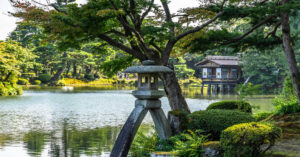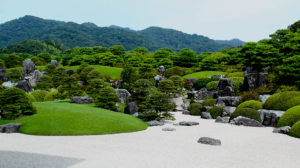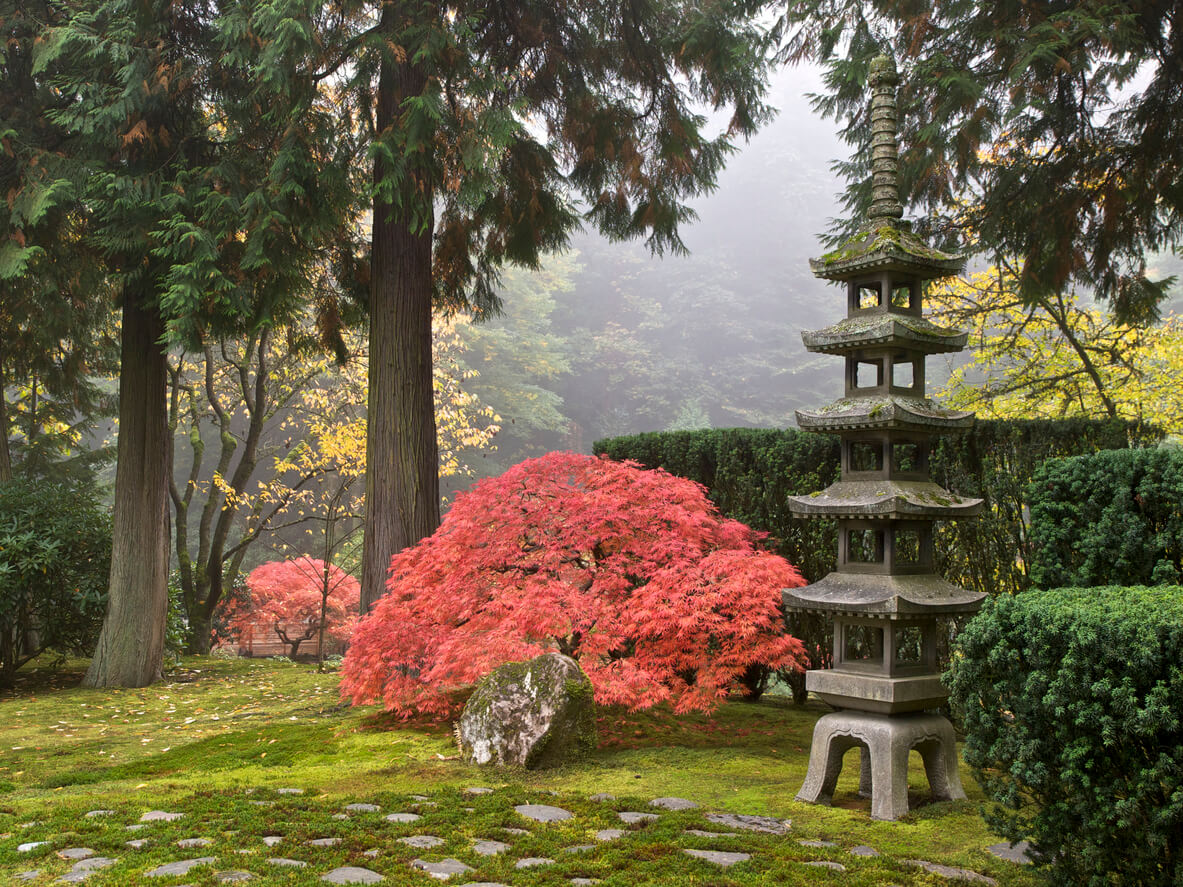Japanese gardens, with their profound tranquility and harmonious design, have captivated people worldwide for centuries. These serene landscapes, meticulously crafted to evoke natural beauty and spiritual balance, offer a glimpse into Japan’s rich cultural heritage. While Japan boasts some of the most famous and revered gardens in the world, authentic Japanese garden designs have also found their way beyond the borders of Japan, influencing landscapes across continents. In this article, we embark on a journey to explore the allure and authenticity of Japanese gardens outside Japan, discovering how these tranquil havens have flourished in diverse cultural contexts.
The Global Spread of Japanese Garden Aesthetics

The dissemination of Japanese garden aesthetics beyond Japan’s shores can be attributed to various historical, cultural, and artistic exchanges. From the early diplomatic relations between Japan and neighboring countries to the widespread popularity of Japanese art and philosophy in the West, the allure of Japanese gardens has transcended geographical boundaries. As Japanese culture gained recognition on the global stage, so did the appreciation for its traditional garden designs, characterized by meticulous attention to detail, symbolism, and a profound connection to nature.
The influence of Japanese garden aesthetics can be observed in various parts of the world, from North America to Europe and Asia. In cities like Portland, Oregon, and San Francisco, California, renowned Japanese gardens offer visitors an authentic experience of Japan’s horticultural heritage. These gardens, often created in collaboration with Japanese landscape architects and horticultural experts, serve as cultural ambassadors, fostering cross-cultural understanding and appreciation.
Authenticity Beyond Borders: Design Principles and Philosophies
While Japanese gardens outside Japan may adapt to local environmental conditions and cultural contexts, they strive to uphold the fundamental principles and philosophies underlying traditional Japanese garden design. From the careful selection of plant species to the meticulous arrangement of stones and water features, authenticity lies in the adherence to these design principles, rather than mere replication of Japanese motifs.
One key aspect of Japanese garden design is the concept of “borrowed scenery” or “shakkei,” wherein the surrounding landscape is incorporated into the garden composition to create a seamless connection between nature and artifice. Whether nestled amidst urban skyscrapers or nestled in rural landscapes, authentic Japanese gardens outside Japan seek to harmonize with their surroundings, blurring the boundaries between the natural and the constructed.
Cultural Adaptation and Interpretation
While striving for authenticity, Japanese gardens outside Japan also undergo a process of cultural adaptation and interpretation, reflecting the unique sensibilities and preferences of their local communities. This fusion of Japanese design principles with local aesthetics results in a dynamic interplay of tradition and innovation, enriching the cultural tapestry of the host country while preserving the essence of Japanese garden aesthetics.
In cities like Buenos Aires, Argentina, and Sydney, Australia, Japanese gardens serve as tranquil retreats amid bustling urban environments, offering residents and visitors alike a respite from the chaos of city life. Through meticulous attention to detail and respect for Japanese design traditions, these gardens evoke a sense of serenity and contemplation, transcending cultural differences to create spaces of universal beauty and harmony.
Harmony in Diversity: Regional Variations of Japanese Garden Design
Japanese garden design encompasses a rich tapestry of regional variations, each influenced by local climate, topography, and cultural traditions. From the lush greenery of Kyoto’s classical gardens to the minimalist elegance of Zen gardens in Kyoto, the diversity of Japanese garden styles reflects the multifaceted nature of Japanese culture. In regions like Hokkaido and Okinawa, distinct environmental conditions give rise to unique garden designs, showcasing the adaptability and creativity of Japanese gardeners throughout history.
In Hokkaido, Japan’s northernmost island known for its harsh winters and abundant natural landscapes, Japanese gardens take on a rugged, rustic charm. Stone lanterns and wooden bridges are often adorned with snow in winter, creating a picturesque scene straight out of a winter fairy tale. Hokkaido gardens also incorporate native plant species such as Yezo spruce and Ezo rhododendron, adding a unique regional flavor to the garden’s aesthetic.
In contrast, Okinawa’s subtropical climate and rich cultural heritage give rise to gardens that exude a sense of tropical tranquility. Okinawan gardens often feature vibrant colors, lush vegetation, and intricate stone pathways reminiscent of the island’s rich history and diverse cultural influences. Traditional Okinawan elements such as Shisa lion statues and red-tiled roofs add a distinctive touch to the garden’s design, reflecting the island’s unique blend of Japanese, Chinese, and Ryukyuan influences.
The Art of Ikebana: Exploring Floral Arrangements in Japanese Gardens

Ikebana, the Japanese art of flower arrangement, holds a central place in traditional Japanese garden design, symbolizing the ephemeral beauty of nature. In Japanese gardens, carefully curated floral displays enhance the overall aesthetic harmony, infusing the landscape with seasonal colors and fragrances. From simple bamboo vases to elaborate ceramic containers, the vessels used in ikebana reflect the reverence for nature and the pursuit of beauty inherent in Japanese culture. Various musical compositions and songs were sung and composed in honor of the beauty and uniqueness of ikebana, some of which are particularly famous and valuable, and if you have one, you can sell vinyl records for cash and earn from passionate collectors.
In addition to traditional floral arrangements, contemporary Japanese gardens often incorporate innovative ikebana designs that push the boundaries of tradition while maintaining a deep respect for nature. Floral sculptures, living walls, and immersive installations offer visitors a fresh perspective on the art of ikebana, inviting them to engage with nature in new and unexpected ways.
Water as a Source of Tranquility: The Role of Water Features in Japanese Gardens
Water features such as ponds, streams, and waterfalls play a central role in Japanese garden design, symbolizing purity, renewal, and the passage of time. Whether reflecting the surrounding landscape or creating soothing sounds that evoke a sense of serenity, water elements contribute to the overall harmony and balance of the garden environment. From the iconic koi ponds of Kyoto’s Imperial Palace to the cascading waterfalls of Nikko’s UNESCO World Heritage Sites, Japanese gardens showcase a diverse array of water features, each imbued with symbolic significance and aesthetic beauty. This kind of art requires dedication and love to enjoy landscaped gardens that take the breath away of passers-by, and you can dedicate yourself to one such work, just make sure that after landscaping when you have a lot of waste left over, count on responsible junk removal in Philadelphia PA to make sure that garbage is disposed of in the right way and that you also work on positive preservation of your environment.
Water features in Japanese gardens are meticulously designed to create a sense of tranquility and contemplation, inviting visitors to pause and reflect on the beauty of nature. Whether trickling gently over rocks or cascading in dramatic waterfalls, the sound of flowing water has a calming effect on the mind, promoting relaxation and mindfulness in the garden environment. Imagine that you have this touch of peace and tranquility in your yard that will help you relax after a hard day, and you can also sit down and successfully remove the accumulated pain and stress in your muscles with excellent recovery wear.
Seasonal Splendor: Celebrating Nature’s Cycle in Japanese Gardens
Japanese gardens are designed to celebrate the changing seasons, with each season offering its own unique palette of colors, textures, and fragrances. From the delicate cherry blossoms of spring to the fiery foliage of autumn, Japanese gardens evoke a sense of seasonal splendor, inviting visitors to witness nature’s ever-changing spectacle. Through meticulous plant selection and seasonal maintenance practices, Japanese gardeners ensure that each season unfolds in its full glory, offering visitors a renewed appreciation for the beauty and transience of life. A spectacular display of nature like this is best visited live, and you can’t go wrong any time of the year to come, plus you can take advantage of the great benefits of e-sim to keep in touch with loved ones back home wherever you are.
Spring is a time of renewal and rebirth in Japanese gardens, with cherry blossoms, azaleas, and wisteria in full bloom, carpeting the landscape in a riot of color. Summer brings lush foliage and vibrant greenery, with lotus flowers and water lilies adorning ponds and streams. In autumn, Japanese gardens are transformed into kaleidoscopes of red, orange, and gold as maple trees and ginkgoes put on a dazzling display of fall foliage. Finally, winter brings a sense of tranquility and stillness to the garden, with snow-covered landscapes and bare branches creating a serene and contemplative atmosphere. With the addition of precise and fine lighting, these beautiful gardens represent perfect tranquility even at night, and with experienced electrician in Plano TX, you too can successfully illuminate your yard and summerhouses for beautiful summer night enjoyment outside with company.
The Zen Garden Experience: Cultivating Mindfulness and Contemplation
Zen gardens, known for their minimalist design and emphasis on meditation, offer visitors a space for quiet reflection and introspection. Characterized by raked gravel or sand meticulously arranged to mimic the ripples of water, Zen gardens evoke a sense of tranquility and stillness amidst the chaos of everyday life. Whether in traditional temple settings or modern urban landscapes, Zen gardens serve as serene sanctuaries, inviting visitors to cultivate mindfulness and find inner peace amid the hustle and bustle of the world. In order to provide yourself with a special sense of peace and well-being in life, you can hire excellent church architects who will make plans for the cathedral according to your wishes, which will remain as a beautiful and special sign in history.
In addition to their aesthetic appeal, Zen gardens also serve as tools for meditation and self-reflection, providing visitors with an opportunity to escape the distractions of modern life and reconnect with their inner selves. The act of raking the gravel or sand in a Zen garden is itself a form of meditation, helping to clear the mind and promote a sense of calm and centeredness. By immersing themselves in the simplicity and beauty of the Zen garden environment, visitors can experience a profound sense of peace and tranquility that lingers long after they leave. However, in order to be really calm and peaceful, you have to work on solving problems and things that bring you stress, and if you have loans that you are afraid of how you will repay, you can rely on the possibility of payday loan consolidation with which you will easily and quickly get rid of your debts.
Preserving Tradition: Challenges and Innovations in Japanese Garden Conservation
As custodians of Japan’s cultural heritage, garden preservationists face numerous challenges in maintaining the authenticity and integrity of Japanese gardens for future generations. From environmental threats such as climate change and invasive species to human-induced pressures such as urbanization and tourism, Japanese gardens require careful stewardship to ensure their continued existence. Through innovative conservation techniques and community engagement initiatives, conservationists strive to strike a balance between preservation and adaptation, safeguarding Japan’s garden legacy for centuries to come. Gardeners are also committed to preserving these beautiful gardens and maintaining their special beauty, and following their example, you too can work on small things in your garden, fighting to keep it fresh and beautiful, and while you immerse yourself in these tasks, do not forget to put away your jewelry into a compact travel-friendly ring case so you don’t lose or damage it.
In recent years, advances in technology have provided new tools and techniques for the preservation and restoration of Japanese gardens. Digital mapping and 3D modeling allow conservationists to create detailed replicas of historical garden features, helping to guide restoration efforts and preserve the original design intent of the garden. Additionally, community engagement programs and educational initiatives raise awareness about the importance of Japanese garden conservation and encourage public participation in preservation efforts. By combining traditional conservation methods with innovative approaches, conservationists can ensure that Japan’s garden heritage continues to thrive for future generations to enjoy. An Internet provider that manages IT services in San Antonio provides its users with an excellent Internet with which they can easily find and use the various benefits of today’s technologies for their own benefit while also working on researching such topics and improving their knowledge.
Beyond Aesthetics: The Healing Power of Japanese Gardens

Japanese gardens are not merely aesthetic expressions but also therapeutic landscapes that promote physical, mental, and emotional well-being. From the restorative effects of nature immersion to the calming influence of Zen-inspired design principles, Japanese gardens offer a holistic approach to healing and stress reduction. Whether through mindfulness practices such as walking meditation or the soothing sounds of flowing water, Japanese gardens provide a sanctuary for rejuvenation and renewal, fostering a deeper connection to oneself and the natural world. If you decide to invest smartly in some of the real estate for life like the beautiful houses in Boca Falls, you will be able to successfully work on forming your own temple of well-being and peace in your home, creating your own oasis that motivates and inspires you for the future.
In recent years, research has shown that spending time in nature can have a profound impact on mental health and well-being. Studies have found that exposure to natural environments can reduce stress levels, improve mood, and enhance cognitive function. By incorporating elements of nature into urban landscapes, Japanese gardens provide urban dwellers with access to the restorative benefits of nature, promoting physical and mental health in densely populated urban environments. With excellent hospitality courses, you can work on it and find out all the beautiful rural destinations that are worth visiting and that will surely awaken in you that special feeling of peace, and you will also have the opportunity to expand your knowledge about valuable tourist gems that will surely benefit you on your next trip.
Conclusion: Embracing the Timeless Beauty of Japanese Gardens
In conclusion, Japanese gardens embody the timeless beauty and profound spirituality of Japanese culture, transcending geographical boundaries to inspire and enchant people around the world. From the regional variations of garden design to the therapeutic benefits of nature immersion, Japanese gardens offer a multifaceted experience that celebrates the harmony between humanity and the natural world. As we continue to explore and appreciate these serene landscapes, may we find solace and inspiration in their enduring beauty and timeless wisdom. Those who do not have the opportunity to nurture their own garden, can work with an excellent remodeling contractor to arrange and redecorate their corner in a Zen style to ensure that special touch of well-being and relaxation.



